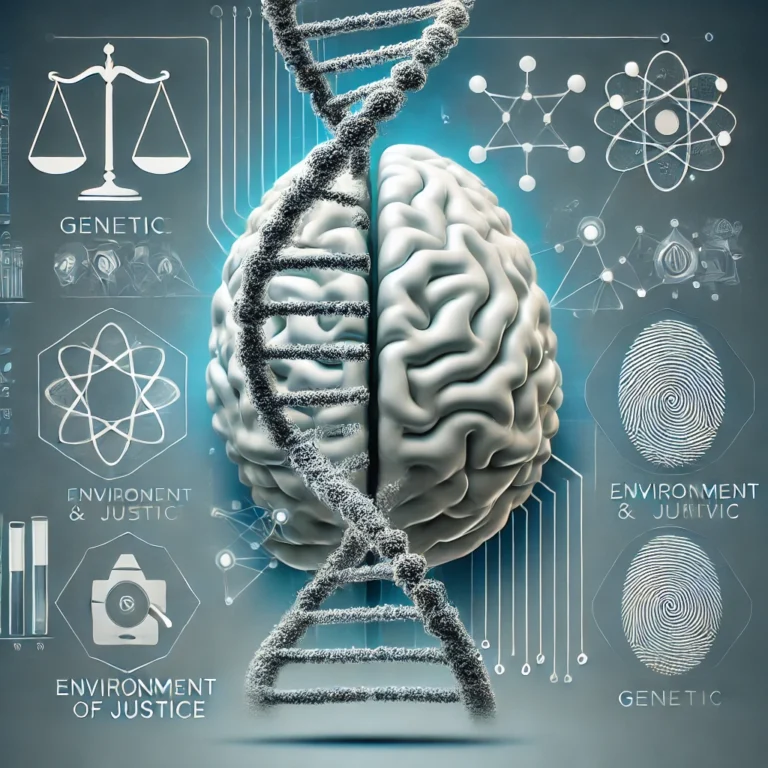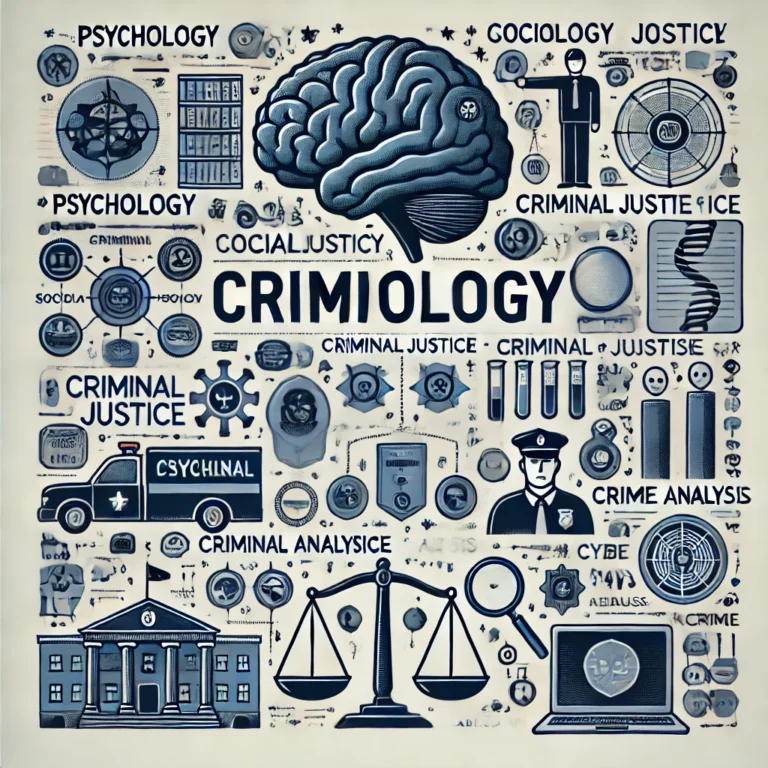The Relationship Between Criminal Behavior and Genetic Composition
Criminology is a multidisciplinary field that aims to understand the reasons behind individuals’ criminal behavior. Among these reasons, genetic composition emerges as a significant factor that raises numerous questions. Is the tendency toward crime acquired, or is it written in one’s genetic code? Do mental illness and physical traits play a role in this context?
This article explores this relationship through two key axes:
- The relationship between criminal behavior and mental illness.
- The relationship between criminal behavior and physical traits.
We will delve into the diverse perspectives of scholars and researchers while highlighting scientific criticism and modern interpretations that support this aspect of criminology.
Axis One: The Relationship Between Criminal Behavior and Mental Illness
1. Defining Mental Illness and Its Connection to Criminal Behavior
Mental illness represents a spectrum of psychological and mental disorders that influence an individual’s thinking, behavior, and emotions. This influence becomes pronounced when the illness is severe or untreated.
According to sociologist Émile Durkheim, a pioneer in sociological criminology, mental disorders can disrupt an individual’s psychological and social balance, prompting them to commit acts that contravene societal norms. Durkheim believed society shares some responsibility for these individuals by providing care and support.
2. Common Mental Illnesses Linked to Criminal Behavior
- Schizophrenia:
Schizophrenia is one of the most studied mental illnesses in the context of crime. Patients with schizophrenia may experience hallucinations or delusions that compel them to commit violent acts. A study conducted in 1980 by Richard NIEVE revealed a significant proportion of violent crimes in society are attributed to individuals suffering from schizophrenia, especially crimes marked by aggression. - Bipolar Disorder:
In severe cases, manic or depressive episodes can lead to impulsive or violent behaviors. Researcher John Monahan noted that individuals with this disorder are more likely to commit crimes during manic episodes due to impulsiveness and loss of control. - Antisocial Personality Disorder (ASPD):
Also known as psychopathy or sociopathy, this disorder is strongly linked to criminal behavior. Individuals with ASPD exhibit traits such as lack of empathy, disregard for societal norms, and tendencies toward deceit and violence. A 1993 study by Robert Hare found that while psychopaths constitute about 1% of the population, they are responsible for over 30% of violent crimes.
3. Scientific Studies Supporting the Relationship
- A study by Lindsay Williams in 1995 on UK prison inmates revealed that about 25% of them suffer from severe mental disorders, including schizophrenia and major depression.
- Robert Hare, in his book “Without Conscience,” explored how psychopathy influences individuals’ decisions and criminal behavior.
4. Criticism of the Link Between Mental Illness and Crime
Despite the strong studies connecting mental illness to crime, Thomas SZASZ argued that mental illness might sometimes serve as an excuse to justify criminal actions. He also suggested that certain societies misuse psychiatric diagnoses to classify and marginalize individuals instead of addressing genuine social issues.

Axis Two: The Relationship Between Criminal Behavior and Physical Traits
1. Theories on Physical Traits in Criminology
Historically, physical traits have been associated with individuals’ propensity for crime. In the late 19th century, CESARE LOMBROSO introduced the concept of the “born criminal,” suggesting that some people are born with distinctive physical traits that predispose them to criminality. These traits include a prominent jaw, large ears, and coarse facial features.
2. Studying Physical Traits According to Scholars
- Cesare Lombroso:
Lombroso proposed the theory of the “atavistic man,” asserting that criminals possess characteristics resembling early human ancestors, making them more inclined toward criminal behavior. - William Sheldon:
He developed the “Somatotype Theory,” classifying humans into three primary body types:- Mesomorph: Individuals with muscular builds who are prone to aggression and impulsiveness.
- Ectomorph: Lean and introverted individuals who rarely exhibit criminal tendencies.
- Endomorph: Plump individuals who are generally friendly and less likely to engage in crime.
3. Modern Studies on Genetics and Crime
- Adrian Raine’s 2002 study used MRI technology to analyze the brains of convicted criminals, discovering structural differences in brain regions responsible for self-control and decision-making.
- Twin studies conducted by Cyril Burt confirmed significant similarities in criminal behavior rates among identical twins, highlighting the role of genetic factors.
4. Criticism and Challenges
Modern critiques emphasize that over-reliance on physical traits to explain criminal behavior diminishes the importance of social and cultural factors that influence individuals.
The Interaction Between Genetics and Environment
The interplay between genetics and environment is pivotal in understanding criminal behavior. Researchers like Caspi et al. demonstrated that individuals with genetic predispositions (such as the MAOA gene mutation) who live in aggressive environments exhibit higher rates of criminal behavior.
Conclusion
The relationship between criminal behavior and genetic composition is complex, interwoven with other factors such as mental illness and physical traits. While theories have evolved over time, there is a general consensus that criminal behavior results from the interaction between genetics and environmental influences.
This field remains one of the most controversial topics in criminology, requiring further studies to deepen our understanding of the intricate dynamics at play.







